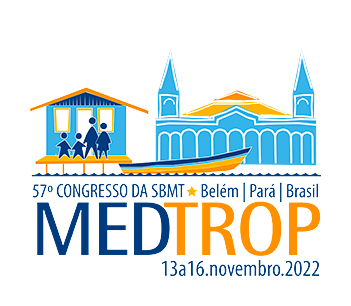Dados do Trabalho
Título
AMERICAN TEGUMENTARY LEISHMANIASIS: SPECIES DEFINITION BY SEQUENCING ITS-1-PCR
Introdução
American tegumentary leishmaniasis (ATL) is characterized by a cutaneous or mucosal manifestation and in Brazil the main species involved are: Leishmania (V.) braziliensis and L. (L.) amazonensis. The correct identification of etiological agents is essential in epidemiological, clinical and pharmacological studies. In our study, ITS1(internal transcriptional spacer 1) was chosen as the target of conventional PCR because it has an adequate number of polymorphisms for species-level distinction, in addition to conserved regions of diagnostic importance. ITS-1/PCR followed by sequencing is suitable to identify Leishmania at the species level, being possible the differential diagnosis of most of the species causing leishmaniasis.
Objetivo(s)
We propose to evaluate species causing ATL, using PCR-ITS-1 followed by sequencing in samples from patients from different regions of Brazil and treated at Instituto de Infectologia Emilio Ribas in São Paulo (IIER).
Material e Métodos
We analyzed 211 clinical samples from patients with suspected ATL treated at the outpatient clinic of the IIER. The biopsy of the lesion was performed according to the routine established in the outpatient clinics by specialized physicians. For this technique, ITS-1-PCR (primers LITSR and L5.8S) was used under the conditions described by Godoy et al. (2020), followed by sequencing, according to Sanger technique.
Resultados e Conclusão
Of the 211 samples, 39.8% (84/211) amplified in conventional PCR for the ITS-1 gene (320pb). All of the 84 amplified samples were submitted to sequencing. It was possible to define 7 species of Leishmania in 72 samples whose sequencing showed some identification, through analysis in the BLASTn software. Among the 72, the highest percentage was of L. (V.) braziliensis detected in 73.8% (62/84). L. (L.) amazonensis in 3.5% (3/84), L.(L.) infantum and L(V.) guyanensis, were each identified in 2.3% (2/84) of the samples. L. (V.) panamensis, L. (V.) utingensis and L. (V.) shawi were identified in 1.19% (1/84) of the samples. Our conclusion is that ITS-1 PCR followed by sequencing is suitable for defining the species causing ATL and L. (V.) braziliensis is the most common Leishmania responsible for ATL in Brazil. The detection of the species responsible for ATL demonstrated the importance of ITS-1-PCR followed by sequencing in epidemiological, clinical and pharmacological studies.
Palavras-chave
L. (V.) braziliensis; L. (L.) amazonensis; American Tegumentar Leishmaniasis; IT-1-PCR; sequencing
Área
Eixo 06 | Protozooses
Categoria
NÃO desejo concorrer ao Prêmio Jovem Pesquisador
Autores
Jaqueline Alves Delprete, Amanda Azevedo Bittencourt, Livia Vieira Almeida, Alessandra Moraes Barros, Helen Lucila de Sá Oliveira, Lucia Maria Almeida Braz, José Angelo Lauletta Lindoso
